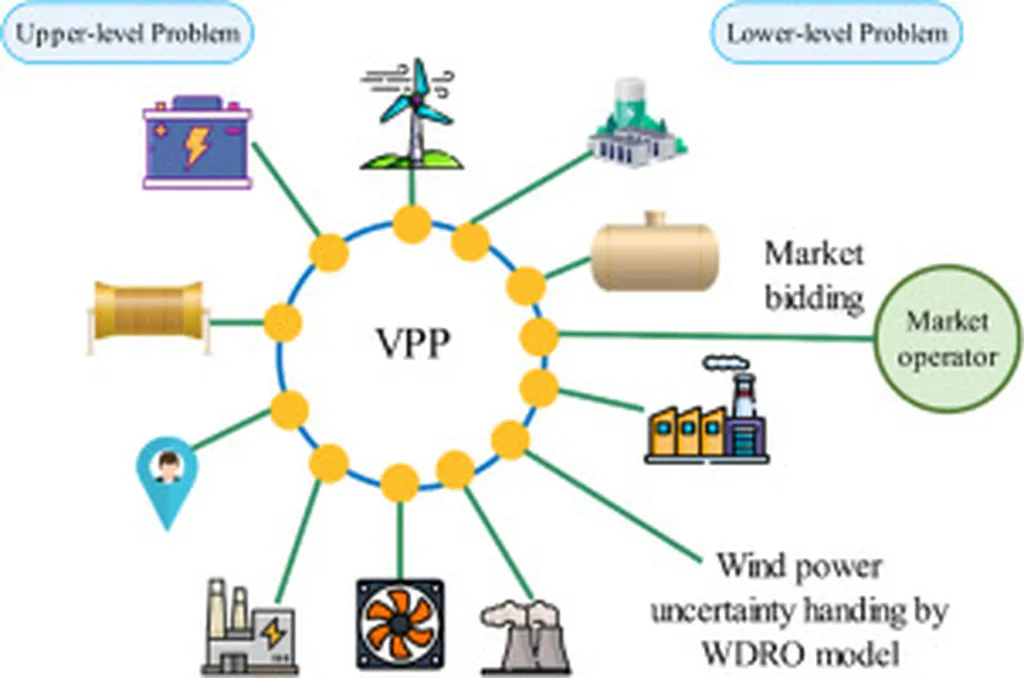In the rapidly evolving energy sector, the integration of renewable energy sources, electric vehicles (EVs), and demand response (DR) programs is becoming increasingly crucial. A recent study published in the journal *Energies* explores how Virtual Power Plants (VPPs) can optimize energy management by combining these elements, offering significant commercial benefits for the energy sector. The research, led by Chia-Sheng Tu from the School of Marine Mechatronics at Xiamen Ocean Vocational College in China, delves into the complexities of VPPs and proposes an innovative approach to enhance their efficiency and profitability.
Virtual Power Plants aggregate diverse energy resources, such as solar power, EV batteries, and user loads, to create a flexible and responsive energy system. By incorporating demand response mechanisms, VPPs can better manage energy consumption during peak periods, reducing costs and improving grid stability. Tu’s research focuses on developing an optimal energy management system that integrates these various components, aiming to maximize economic benefits for VPP operators.
One of the key innovations in this study is the use of willingness curves to design DR mechanisms under different pricing schemes, including Time-of-Use (TOU), two-stage, and critical peak pricing periods. “By understanding the consumption patterns of industrial, commercial, and residential users, we can create more effective DR programs that incentivize load curtailment during peak times,” Tu explains. This approach not only helps to balance the grid but also provides financial incentives for users who participate in DR programs.
To optimize the energy management model, Tu and his team developed an Improved Wolf Pack Search Algorithm (IWPSA). This algorithm enhances the original Wolf Pack Search Algorithm (WPSA) by reinforcing key behaviors such as detection, encirclement, and attack strategies. “The IWPSA provides a parameter optimization mechanism with global search capability, which significantly improves the search performance and stability of the algorithm,” Tu notes. This advanced optimization technique allows VPPs to simulate and analyze maximum profits under various scenarios, such as different seasons, incentive prices, and DR periods.
The research demonstrates that the proposed method can assist decision-makers in improving the operation and scheduling of VPPs. By optimizing energy management, VPPs can achieve higher economic benefits, making them more attractive to investors and energy providers. “This study serves as a valuable reference for system architecture planning and evaluating the performance of VPP operation management,” Tu adds.
The findings of this research have significant implications for the energy sector. As the demand for renewable energy and EVs continues to grow, VPPs will play a crucial role in integrating these resources into the grid. By optimizing energy management and incorporating demand response programs, VPPs can enhance grid stability, reduce costs, and provide financial incentives for users. This study highlights the potential of advanced algorithms and data-driven approaches to revolutionize the energy sector, paving the way for a more sustainable and efficient future.
In conclusion, Chia-Sheng Tu’s research offers a comprehensive framework for optimizing the energy management of Virtual Power Plants by integrating demand response and electric vehicles. The use of the Improved Wolf Pack Search Algorithm provides a powerful tool for maximizing economic benefits and improving grid stability. As the energy sector continues to evolve, this research will undoubtedly shape future developments in VPP technology and demand response programs, driving innovation and sustainability in the energy industry.

